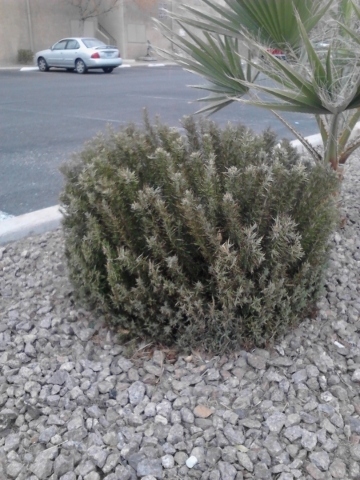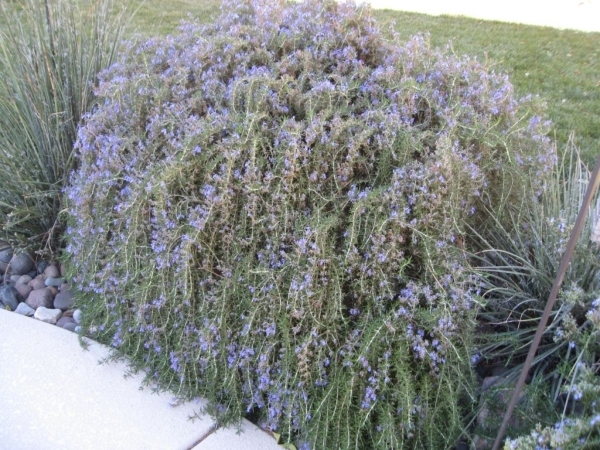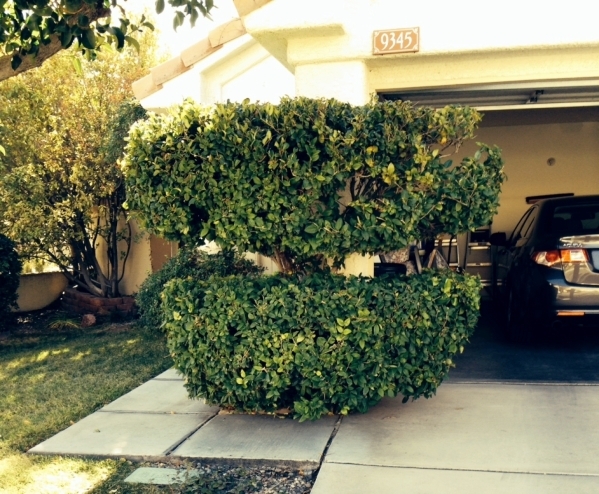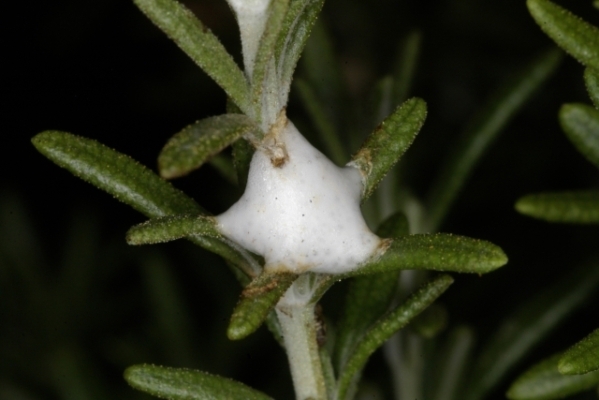Rosemary thrives in desert Southwest
Q: I use rosemary purchased from the store for cooking. It is expensive and stays fragrant very long if I don't use it all. I would like to plant rosemary in our yard so that I can use it in my cooking. Is there a difference between rosemary used for cooking and rosemary used in landscaping?
A: There are several varieties of rosemary, but most are selected for landscaping rather than cooking. Many of the landscape varieties have horizontal or prostrate growth. However, these landscape varieties can be used for cooking as well. But varieties selected for cooking are usually upright and often have a higher oil content. Upright growth is easier to harvest.
Growing rosemary as an herb is different from growing rosemary as a landscape plant. Two traits are considered desirable in rosemary as an herb: upright succulent leaf and stem growth and a high oil content.
To grow rosemary for cooking, push new growth with nitrogen fertilizers and harvest before flowers are produced. Seldom is rosemary left to flower when used as an herb, but the new growth is dried or used fresh. Flowers may be attached when sold at farmers markets.
The best oil comes from rosemary flowers. However, most commercial oil production is from leaves and stems, which produces more abundant oil, but it is inferior to the oil produced in the flowers. The same technique is used, except high phosphorus fertilizer is applied to improve oil production, and harvesting is done when flowers are present for higher quality oil.
Some of the better varieties for cooking include Benenden Blue, Flora Rosa, Tuscan Blue, Majorca Pink, Arp, Albiflorus, Huntington Carpet, McConnell's Blue, Irene, Holly Hyde and Hill Hardy, to name a few.
Q: When is the best time to prune a rosemary bush? Our rosemary bush has grown too large. I would like to reduce it to about one-half of its current size. Also, any suggestions about how I should prune it would be greatly appreciated.
A: If you are pruning it once a year, now is a good time. If you are pruning it as a hedge or you have to keep it under some sort of size control, then prune it once a month. If you are pruning it to use for cooking, cut it back now, let it regrow and harvest the new, succulent growth before it flowers.
You have a few alternatives for an overgrown plant. One is to cut the plant near the ground and let it regrow from 2-inch-long stems. Prune it now or just before new growth begins.
Another method to reduce its size requires more care. Trace the longest branch of the shrub inside the plant and remove it where it joins a main branch. Leave no stub. Select two or three other long branches on the inside and make the same kind of cuts. Prune every couple of years or when it gets too large.
Your third alternative is to replace the plant with something that doesn't get so large.
After pruning, fertilize as you would to encourage new growth. One fertilizer application a year is all that is needed unless you are growing it as an herb that requires frequent harvesting. Applying too much fertilizer will dilute the oil content and fragrance.
If you are harvesting frequently, fertilize lightly every six to eight weeks with a balanced fertilizer containing nitrogen and phosphorus. Or you can apply your favorite compost to the base of the plant and get more spectacular results.
Q: My rosemary plant has white foamy droplets on the stems. I can spray them away when I water with a hose, but they return. They do not seem to be harming the plant, but what are they?
A: The white foamy droplets are called spittlebugs and common on rosemary. They suck plant juices and are buried inside the spittle for protection. They can be knocked off the plant with a strong stream of water from a hose, but they return quickly.
They are usually more of a nuisance than a problem unless you are growing rosemary as an herb. They can multiply and become a problem in the future, so keep an eye on them.
Neem oil and horticultural oils will give some control of spittlebugs when sprayed directly on the plants. Spray a small section of the plant first to make sure the oils do not damage the rosemary.
Soap and water sprays wash the spittle off and leave these bugs unprotected. Follow this with an insecticide spray, such as pyrethrum, which protects the plant from becoming reinfested. This might need to be done several times, a few weeks apart, to get them back under control.
Q: My Tuscan rosemary is in trouble. It appears to be dying.
A: Tuscan is a nice upright rosemary variety with good color and density that is grown for cooking and its oil content. It has very few insect and disease problems. We will occasionally see aphids and spittlebugs but nothing to get overly excited about.
Rosemary prefers soils that have been improved with compost and organic surface mulches such as wood chips. The soils must drain well. They do not like rock mulch at all and frequently die a few years after being planted.
When these plants die, it is usually due to soil problems. Roots have a tough time "breathing" because of poor drainage. Most of the time, these soil problems cause the roots and stem of the plant to die. The plant collapses during the heat of summer because roots are dead.
Avoid planting rosemary in low spots or where water accumulates. These conditions suffocate roots. It is possible to replant in this spot, but remove as much of the soil as possible, and replace it with the soil that drains easily.
This particular root disease may linger in this infected soil and cause future problems.
Q: I have an upright rosemary, about 4 feet tall. It was sheared once on the top and the sides. It has never bloomed. Is there such a variety that never blooms, or am I doing something wrong with this plant?
A: I have never heard of one not blooming. Most reasons plants do not bloom are planting them in low-light levels (shade) or shearing them just prior to bloom. Normal bloom periods are spring and fall, but in warm areas, they might bloom all season long.
Prune during the summer months if you want the blooms. Make sure it receives plenty of sun, and do not plant in the shade. Avoid high nitrogen fertilizers, and use fertilizers recommended for other flowering plants such as roses.
Q: I have a neglected privet that has overgrown its space. When and how far back should I prune it and keep its shape? My neighbor cut one back several years ago, and it never came back at all.
A: Japanese or wax leaf privet regrows slowly after it has been pruned. If it is pruned deeply to the interior, where there is larger diameter wood, it is possible it may not grow back.
Your privet is overgrown and requires the removal of 12 to 18 inches of growth. It will recover very slowly from a pruning this severe. There is also a chance it may never recover in some spots.
In your particular case, this plant has simply outgrown the area it was given. It is time to remove it and look for something different.
— Bob Morris is a horticulture expert living in Las Vegas and professor emeritus for the University of Nevada. Visit his blog at xtremehorticulture.blogspot.com. Send questions to Extremehort@aol.com.

























